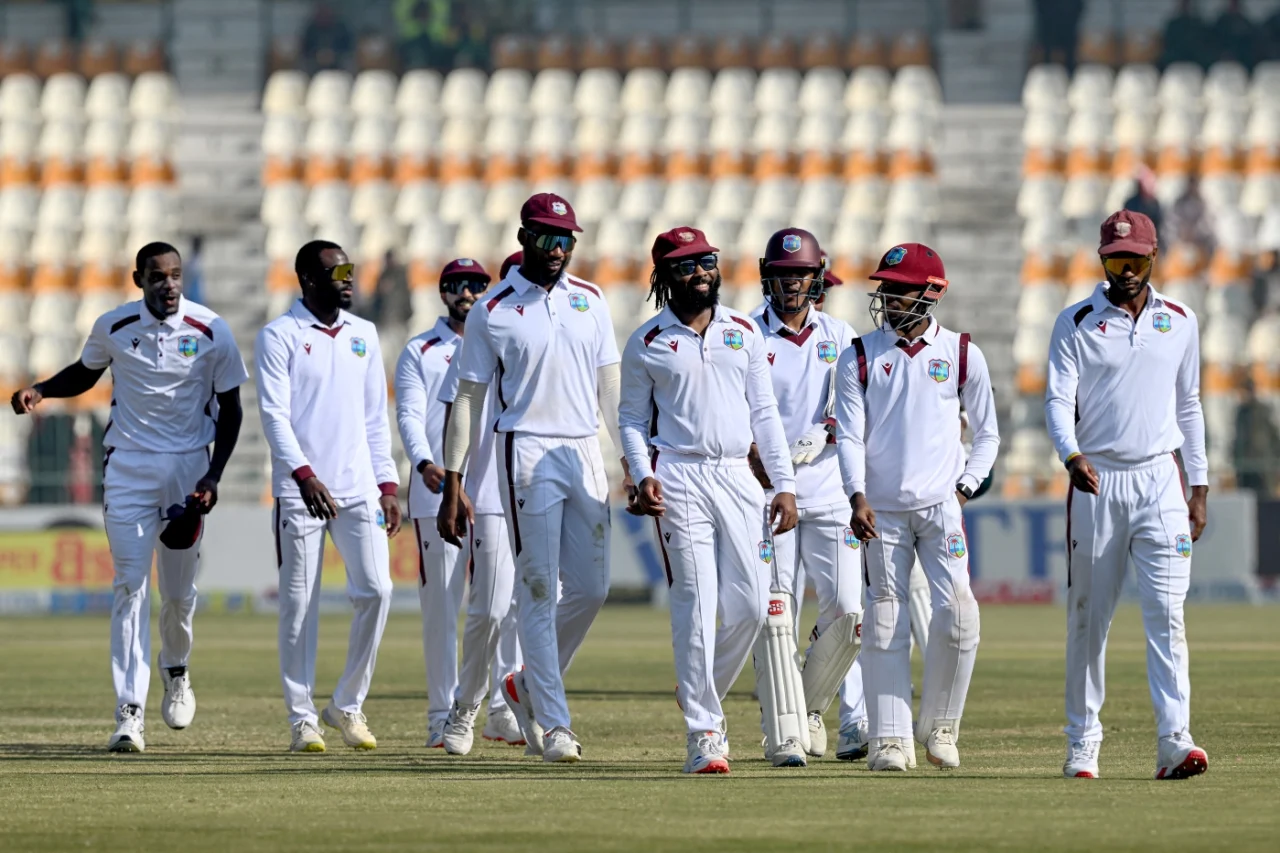PAK vs WI: After 35 years West Indies managed to win their first test win in Pakistan by 120 runs with Jomel Warrican being the anchor of the victory. Pakistan’s cricketing strategy, in a quest to win matches at any cost, has reached a controversial edge as the PCB has decided to produce spin-friendly pitches for teams visiting Pakistan. This strategy might have given immediate success but seems to be boomeranging. The West Indies Test series has thrown questions about whether this strategy would sustain or not, and what will be the outcome for Pakistan’s cricketing future in the long run.
The historical shift: from 1910 to 2024
Pakistan’s new obsession with spin-friendly pitches has achieved a remarkable but alarming feat in cricketing history. For more than a century, no one has witnessed spinners all set to take control from ball one of a Test match, but now Pakistan has made it possible three times in a row, the last time in 1910. This shift in pitch preparation marked a significant deviation from traditional precedents and is now stirring both curiosity and concern.
The Strategic Push for Spin: A Winning Formula?

Pakistan’s aggressive approach towards the preparation of turning wickets started as a strategy to counteract opposition teams, particularly those with monstrous batting line-ups. Historically, the Pakistan pitches have not favored the lot of a spinner overly but in the face of repeated defeats and challenges at home, the PCB, more than ever in the past, has pushed hard to give spinners an upper hand.
This strategy was fully on display in the 2025 Test series against West Indies. Pakistan produced pitches so conducive to spin that even spinners were required to open in all four innings across three consecutive Test matches. That this helped in early breakthroughs is evident as Noman Ali and Sajid Khan, Pakistan’s spinners, began to shine in taking wickets in many matches. Against England in 2024 in the Rawalpindi Test, the hosts managed to win the match by 9 wickets, and the entire victory owed a lot to spin bowling.
But then again, it has proved to be short-lived, as can be seen in the continuing series against the West Indies.
Effect of Playing Just Spin-Oriented Pitch

Though short-term gains have come to fruition, long-term effects are slowly surfacing with playing on just spin-friendly pitches. Again, in the second Test of the series, Pakistan’s spinners were at their best, in Multan. Noman Ali and Sajid Khan claimed four wickets each, while Ali took a hat-trick in the first innings. Yet, the match went in the favor of spin as Pakistan went into a tight corner. By day two of the match, Pakistan’s top order had simply collapsed again, leaving the team at 76 for 4 and still requiring 178 runs to win.
West Indies has set a tricky target of 253 runs that has seen its captain Craig Brathwaite contribute a robust 52-run knock. But the big blows for Pakistan continue to come, with Babar Azam on a lean patch. At the same time, though the pitch offered turn, this simultaneously exposed a weakness in Pakistan’s batting unit, which time and again crumbled against spin and lost the match by 120 runs to West Indies.
A False Balance: Victories at All Costs

Though crafting pitches that favor spinners may be a winning strategy for maximizing home conditions, Pakistan has perhaps inadvertently prepared a trap. The team’s reliance on spin to secure victories is starting to take its toll, with evidence clearly visible in terms of its ability to chase targets or build a sustainable batting platform while facing heavy spinning conditions.
Such an approach raises serious questions regarding the future of Pakistan cricket. On the one hand, focusing on spin-friendly conditions has fetched a series of victories, including the recent triumph against West Indies in the first test of the series. On the other hand, it has exposed major cracks in the batting abilities of the team in challenging conditions. Now that the second Test is underway, it will be interesting to see if Pakistan can regain the upper hand and finally free itself from the shackles of overdependence on spin for winning matches.
The Road Ahead: Any Way Out?
However, to win for the long haul, Pakistan will have to evolve to a better balance. Since spin bowling would always be its strong point, its winning strategy needs to be so balanced that pitches can be prepared with either fast bowlers or spinners in mind to be able to deliver more lasting success. Second, the batting unit will also have to strengthen so that the side can come out stronger even against a much wider range of conditions.
As the West Indies continue their challenge in the second Test, a rethink by PCB may be forced regarding its obsession with an over-zealous search for spin-friendly conditions and a need to look forward to a balanced development strategy for the betterment of the future of cricket in Pakistan. Obsession with changing the geographical nature of the game might inadvertently lead to catastrophic consequences, so Pakistan needs to find a midway between adapting to the conditions and building up for other challenges of playing international cricket.
ALSO READ: The Hundred: IPL Owners For Final Rounds






















